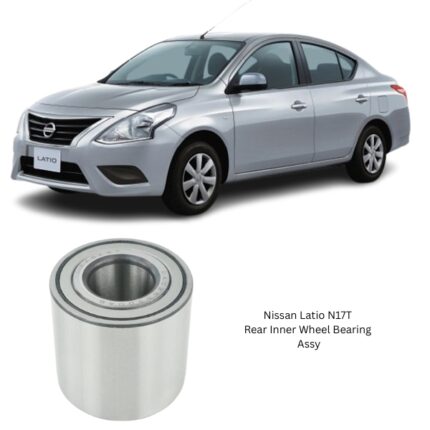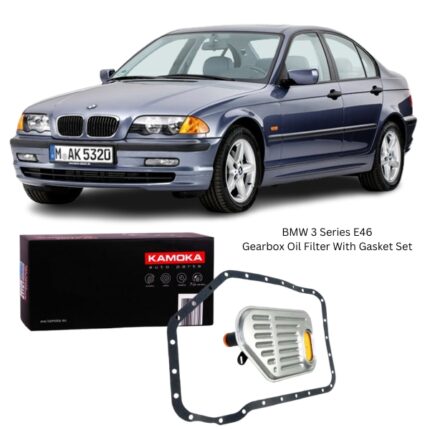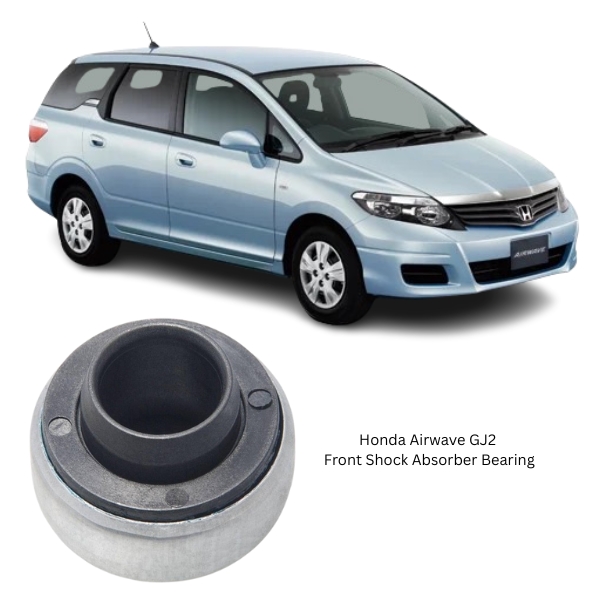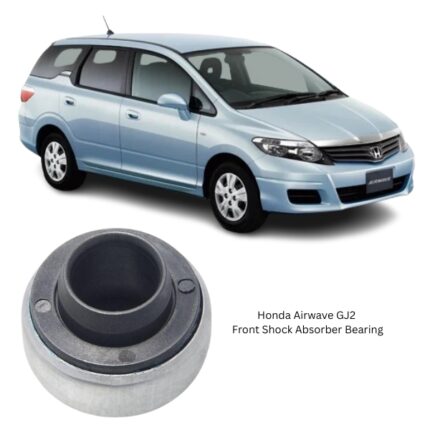Get Honda Airwave GJ2 Front Shock Absorber Bearing 54325-1HA0A in Kenya
The Front Shock Absorber Bearing is an integral component of the vehicle’s front suspension system, designed to ensure smooth steering response, proper load transfer, and effective suspension articulation. Positioned at the upper end of the front shock absorber strut assembly—typically within or near the strut mount—this bearing supports rotational movement between the shock absorber strut and the vehicle chassis, allowing the front wheels to turn smoothly while maintaining suspension function.
This bearing is often referred to as a strut bearing or suspension top mount bearing, and though small in size, it plays a crucial role in maintaining optimal ride comfort, steering accuracy, and suspension geometry. Its performance has a direct impact on steering feel, tire wear, and the overall handling dynamics of the vehicle.
Function and Role in Suspension System
The front shock absorber bearing is a dual-purpose component:
-
Steering Rotation Interface: In MacPherson strut-type suspension systems—common in modern front-wheel-drive vehicles—the front shock absorbers turn with the wheels during steering input. The shock absorber bearing allows the shock absorber strut to rotate smoothly inside the strut tower as the driver turns the steering wheel.
-
Load Transfer and Isolation: The bearing helps distribute vehicle weight and suspension loads from the strut assembly to the chassis. It isolates road shocks and vibrations, reducing their transmission to the vehicle body and the steering column.
By enabling friction-free movement and ensuring proper load handling, the front shock absorber bearing is essential to preserving the integrity of the suspension and steering system.
Design and Construction
The front shock absorber bearing is typically a sealed bearing unit, integrated into or paired with the strut mount. Its design varies depending on the vehicle application but generally includes:
-
Bearing Raceways (Inner and Outer): These hardened steel or composite components guide the rolling elements and maintain structural integrity under pressure.
-
Rolling Elements (Balls or Rollers): Positioned between the raceways to facilitate smooth, low-friction rotation.
-
Cage or Retainer: Keeps the rolling elements evenly spaced and in alignment, preventing clumping or misrotation.
-
Seal or Shield: Protects the bearing internals from dirt, water, and debris, while retaining lubricant inside the assembly.
-
Mounting Plate or Housing: Integrates the bearing into the top mount assembly, often in combination with rubber bushings for added cushioning and vibration isolation.
In many vehicles, the bearing is located between the upper spring seat and the strut mount, and it must be able to handle both rotational and axial (vertical) loads simultaneously.
Material Specifications
To withstand the stresses of everyday driving and harsh road conditions, the bearing components are made from:
-
Bearing Steel (e.g., SAE 52100): Used for races and rolling elements, providing wear resistance, high fatigue life, and precision tolerances.
-
Polyamide or Reinforced Plastic: Often used for cages or retainers to reduce weight and noise.
-
Synthetic Rubber or Elastomer: Integrated into the upper mount to dampen vibrations and absorb shocks.
-
Metal Reinforced Housing: For secure mounting and long-term durability under load.
The choice of materials ensures a balance of strength, wear resistance, corrosion protection, and smooth performance over time.
Performance Characteristics
A high-quality front shock absorber bearing must deliver:
-
Smooth Rotational Motion: Allowing the strut to rotate during steering without binding or creating resistance.
-
Noise Reduction: Operating quietly under all load conditions, without grinding or knocking.
-
Load Endurance: Supporting vehicle weight and dynamic forces from braking, turning, and uneven road surfaces.
-
Vibration Isolation: Minimizing transmission of road noise and harshness to the vehicle cabin.
These performance characteristics contribute directly to ride quality, vehicle handling, and steering responsiveness.
Installation and Fitment
During installation, several factors must be observed to ensure correct function:
-
Alignment with Strut Assembly: The bearing must be properly seated within the strut mount and aligned with the upper spring seat.
-
Torque Specifications: Proper tightening of the top strut nut is critical to maintain bearing preload and prevent excessive movement.
-
Cleanliness and Orientation: Bearings must be installed in a clean environment, with correct orientation to allow unrestricted rotation.
-
Spring Compressor Use: To install or replace the bearing (when part of a complete strut assembly), a spring compressor is usually needed to safely remove and reinstall components.
Some strut bearing assemblies are sold as part of a complete strut mount kit, while others are available separately for individual replacement.
Symptoms of Wear or Failure
Over time, the front shock absorber bearing may wear due to:
-
Contamination (dirt, water ingress)
-
Lack of lubrication (in sealed units, when seals fail)
-
High mileage or frequent exposure to potholes and poor road surfaces
-
Improper installation or excessive torque
Common signs of a failing front shock absorber bearing include:
-
Clunking or knocking noises when turning the steering wheel
-
Stiff or jerky steering
-
Vibrations transmitted through the steering wheel
-
Uneven or accelerated tire wear
-
Pulling or misalignment during cornering
If not addressed, a faulty strut bearing can compromise vehicle safety and lead to additional wear on related components such as the strut, mount, and coil spring.
Maintenance and Lifespan
Most front shock absorber bearings are maintenance-free, sealed at the factory with long-life lubricants and designed for extended service intervals. However, factors such as road conditions, vehicle load, and driving habits can influence their longevity.
In typical use, strut bearings can last 80,000 to 120,000 kilometers, though early wear can occur in harsh driving environments. During suspension work or strut replacement, it’s often advisable to inspect or replace the bearing proactively to avoid future issues.
Replacement Guidelines
When replacing the front shock absorber bearing:
-
Always inspect the strut mount, coil spring, and upper spring seat for wear or damage.
-
Consider using OEM or high-quality aftermarket parts for consistent fit and durability.
-
Align the strut mount properly during reassembly to maintain suspension geometry and prevent noise.
Using a complete strut mount kit that includes the bearing, mount, and isolators is often recommended for convenience and reliability.
Impact on Vehicle Dynamics
A properly functioning shock absorber bearing ensures:
-
Precision steering response
-
Stable suspension movement
-
Balanced wheel alignment
-
Improved ride comfort
-
Protection of adjacent components
By maintaining the intended interface between the chassis and the strut, the bearing enables the suspension system to work as designed, adapting to road inputs and driver commands with precision.
Follow us on Facebook for more parts.





Reviews
Clear filtersThere are no reviews yet.